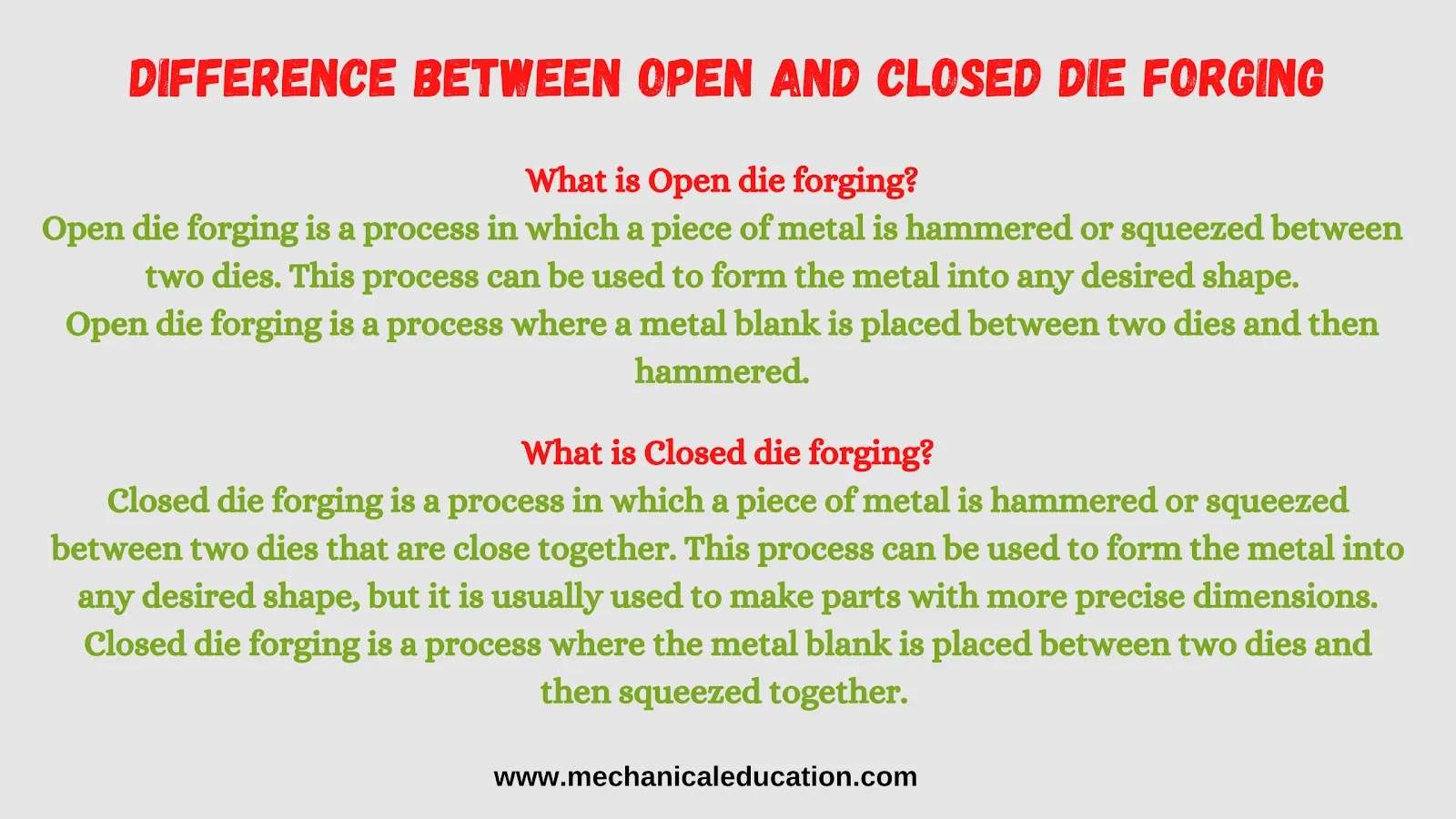Difference between Open and Closed Die Forging?
What is Open die forging?
Open die forging is a process in which a piece of metal is hammered or squeezed between two dies. This process can be used to form the metal into any desired shape.
Open die forging is a process where a metal blank is placed between two dies and then hammered.
What is Closed die forging?
Closed die forging is a process in which a piece of metal is hammered or squeezed between two dies that are close together. This process can be used to form the metal into any desired shape, but it is usually used to make parts with more precise dimensions.
Closed die forging is a process where the metal blank is placed between two dies and then squeezed together.
Difference between Open and Closed Die Forging?
The difference between them is mainly in how they get the metal hot enough to flow, closed die methods use either external induction heating, furnaces (the more common method due to greater simplicity) while open die uses external hammers driving contractions in alternating sequence with continuous heating by flame-vapor torches.
Open die forging is a much more expensive, labor-intensive process than Closed die forging.
Open die forging uses a punch with locators which hold the sheet. Closed die forging requires the part to be inserted in a die cavity and closed around with hydraulic pressure.
Open Die Forging products are not uniform in shape and have a rough surface finish.
Closed Die Forging products are more uniform in shape and have a smoother surface finish.
Open and Closed Die Forging refers to the final dimensions of a forged part which is determined by the initial shape or geometry of the die.
In contrast, a closed die forging’s final dimensions depend on how long it takes for metal to flow from one end of its cavity to another before it is stamped off at that end by coining or another tooling.
In general, most engineering applications prefer closed die forgings because they give more precision in terms of dimension.
The dimension of an open die forging is determined by how far away from one another walls of the cavity are which form it.
A closed die forging uses a shaped or molded metal, while an open die forging uses a flat sheet of metal. When the metal is heated, it becomes pliable and pushed into the dies. The process distorts the final product because different areas will stretch differently. Closed dies cause less distortion than open dies because they push all parts of shapes or molds evenly to fill all crevices together evenly.



